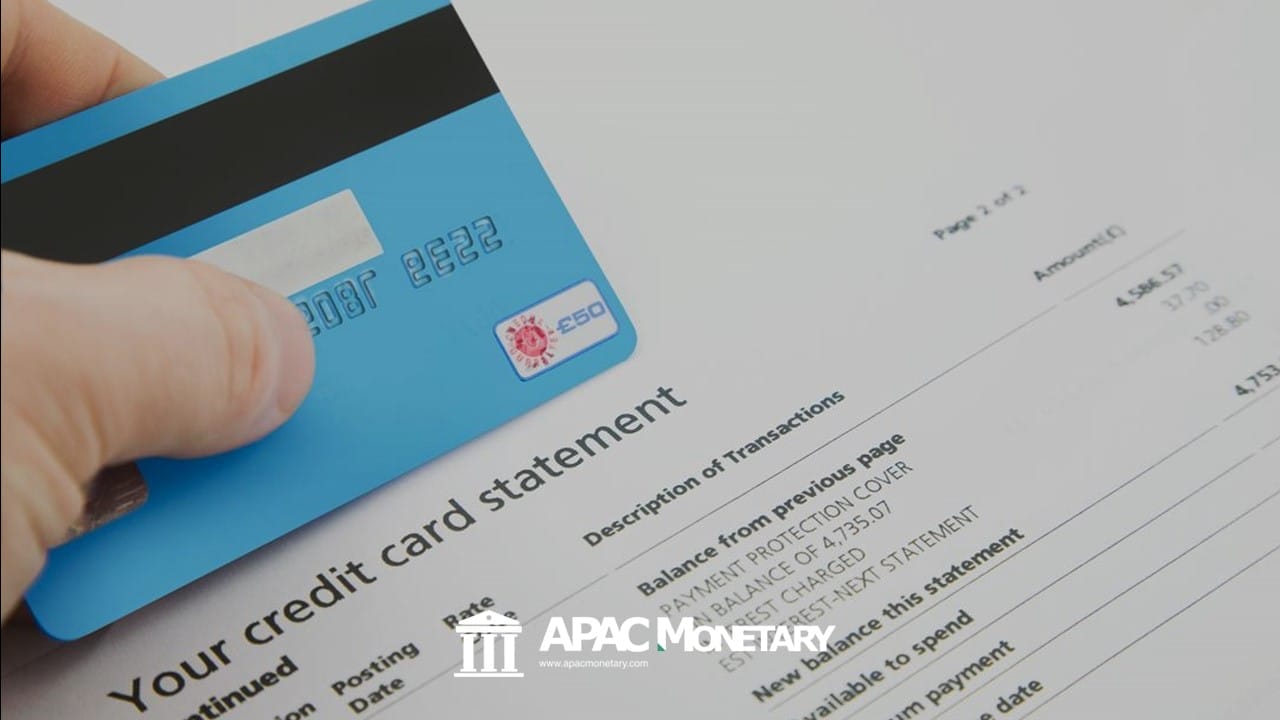Table of Contents
Hey there! Do you ever get that “lost in translation” feeling when you look at your credit card statement? You’re not alone! Lots of us find all those numbers, terms, and dates pretty overwhelming. But understanding your credit card statement is super important for managing your money smartly. It’s not just a bill—it’s a window into your spending habits and a tool to help you take charge of your finances.
In this article, we’ll take apart the key parts of your credit card statement in a way that’s easy to understand. From interest rates to due dates, we’ll walk you through seven essential tips to decode what can seem like financial gibberish. With some clear examples, you’ll feel more confident in reading these statements and be better prepared to handle your credit wisely. So let’s jump in and turn those confusing numbers into something nice and clear!

Understanding Your Credit Card Statement
Understanding your credit card statement can actually be pretty enlightening! It’s not just about transactions; it reveals your spending habits and shows you areas where you can make improvements. For example, if you notice you’re spending a lot at certain stores, it might prompt you to reconsider those impulse buys. By organizing and keeping track of this info over time, you can spot trends and start making more mindful decisions about your spending.
Many Filipinos don’t pay much attention to the interest rates on their statements, but they have a big impact. By understanding how interest is calculated based on your balance and payment history, you can devise strategies to minimize your debt. Whether it’s adjusting when you make payments or finding ways to consolidate higher-interest cards, really understanding these numbers turns them from something scary into something you can actually work with.
In the end, regularly checking your statement doesn’t just help you avoid surprises – it also helps you build better financial habits. It puts you in control of both your day-to-day spending and your long-term financial goals!

1. Key Components of a Credit Card Statement with Samples
It’s essential to understand your credit card statement to stay on top of your finances. The Transaction Summary is a key part, showing your purchases, payments, and any fees. For example, you might see entries like Grocery Store – ₱1,500, Gas Station – ₱800, and Annual Fee – ₱2,000. This helps you see where your money is going so you can make smart choices.
Another important part is the Minimum Payment Due, which tells you the least amount you need to pay to avoid penalties. If your minimum payment is ₱3,000, but you owe ₱15,000, it’s a sign you should pay more to avoid high interest.
Lastly, check the Reward Points summary. For example, if you’ve earned 5% cash back on dining, like ₱300 based on a ₱6,000 spend, it’s a great incentive for smart spending. Keep an eye on these details to stay in control of your finances!
2. Decoding Transaction Descriptions
Deciphering the descriptions on your credit card statement can be a bit like solving a mystery. It’s important to get familiar with the abbreviations and terms you might come across. For example, a charge from “SM Supermall” might be from buying groceries at SM Hypermarket for ₱1,500, while a charge from the online shopping portal “Lazada” could be from an online clothing purchase worth ₱2,200. Knowing these patterns not only helps you understand your expenses better but also allows you to keep track of your spending habits.
Also, watch out for any unexpected fees hidden in those descriptions. A transaction labeled as Philippine Airlines for ₱35,000 could include additional charges like baggage fees or insurance, not just the flight cost. Understanding what each entry refers to empowers you to dispute any mistakes and manage your finances more effectively. By regularly reviewing these descriptions each month, you’ll become more aware of where your money is going, which is super important in today’s fast-paced financial world.
3. Interest Rates and Fees Explained
Understanding interest rates and fees is really important when it comes to managing your credit card. In the Philippines, most credit cards have an annual percentage rate (APR) ranging from 20% to 40%, depending on the type of card and the issuer. For example, if you have a balance of ₱10,000 with a 30% APR for one month without making any payments, you’d end up owing about ₱250 in interest. That might not sound like a lot, but it can add up if you don’t keep up with it.
It’s also important to be aware of other fees that come with using your credit card, like late payment fees or cash advance charges. If you miss your payment deadline, you might be charged around ₱1,200, and cash advances often come with a big fee plus interest calculated from the date you withdraw the cash, not just at the end of the billing cycle. This means that using your credit card for quick cash without planning to pay it back right away can lead to expensive financial problems and make it hard to stick to your budget.
4. Minimum Payment vs. Full Balance
When it comes to using credit cards in the Philippines, it’s really important to understand the difference between making the minimum payment and paying off the full balance. Let’s break it down: If you have a total balance of ₱10,000 and your credit card company asks for a minimum payment of 3%, that’s just ₱300. It might seem doable every month, but here’s the catch – only paying the minimum means you’re actually borrowing money at high interest rates, sometimes exceeding 30% annually. Over time, those small monthly payments can drag you deeper into debt as more of your hard-earned peso goes toward interest rather than reducing your actual debt.
On the other hand, if you clear the full ₱10,000 balance each month by the due date, you not only stay on good terms with your credit card company but also build up a positive credit history. Plus, you’ll avoid any interest charges—a super-smart move, especially in today’s economy where debts can be really costly. Paying in full allows you to use your credit card responsibly, enjoy rewards programs, and avoid falling into financial traps—a perfect balance for smart spenders who want to boost their purchasing power while keeping their finances in good shape.
5. How to Spot Unauthorized Charges
Keeping an eye on your credit card statement is super important for catching any charges that you didn’t make. It’s more common than you might think! Start by getting to know your usual transactions, like your Netflix subscription (around ₱400) or dining out at your favorite spot. If you spot any unexpected charges, like ₱2,500 from a place you don’t recognize, it’s a sign to look into it further.
To make things easier, keep your receipts and notes organized to track your expenses. If you see a charge from “XYZ MALL” for ₱3,000 but you don’t remember going there, take action right away: check your previous purchases or ask family members if they used your card. Also, many digital banking apps can send you alerts for unusual spending—make sure to turn these on to catch any problems early. Being proactive and keeping an eye on things helps you catch any potential fraud before it becomes a big deal.
6. Rewards Points and Benefits Breakdown
It’s important to know about the rewards points and perks you can get from using your credit card. For example, if you spend ₱2,000 on dining and your card gives you 1 point for every ₱20 spent, you could earn 100 points. Some banks even have special deals, like getting double points at restaurants or during certain times, which can really boost your rewards.
These points can be used for cool stuff like cashback, travel discounts, or vouchers for shopping. For instance, redeeming 5,000 points might get you a ₱500 gift certificate at your favorite stores. By keeping up with your credit card’s rewards and promotions, you can make wiser spending choices that not only take care of your needs but also bring you awesome perks. So, remember, rewards should be a big factor in your financial plans!
7. Key Terms Explained: APR, Balance, Fees
Let’s talk about APR or Annual Percentage Rate. It’s a really important term because it tells you the yearly interest rate charged on your outstanding balance. For example, if you have a balance of ₱10,000 on your credit card with an APR of 20%, you might end up paying around ₱2,000 in interest over a year if you don’t make extra purchases or payments. Understanding APR helps you make smart decisions about how much debt to carry and when to pay it off. Making timely payments can really save you from unnecessary costs.
Your credit card balance is the total amount you owe at any given time. So, whether it’s from groceries or a shopping spree, if your balance reaches ₱15,000, be aware of the fees—they can quickly add up and affect your finances. In the Philippines, late payment fees could be anywhere from ₱500 to ₱1,200, based on your bank’s policies.
Keeping an eye on these key terms and understanding how they impact your financial health can help you manage your expenses better and improve your credit score over time.
Tips for Managing Your Credit Card Usage
When it comes to managing your credit card usage in the Philippines, it’s super important for your financial well-being. One great tip is to set a spending limit that fits with what you make and spend each month. For example, if you bring in ₱30,000 monthly, think about capping your credit card expenses at ₱5,000 to steer clear of getting into debt trouble. This helps you spend mindfully on important stuff while still having some room for unexpected costs now and then.
Another helpful idea is to use the pay-in-full option whenever you can. If you’ve got a ₱10,000 bill due this month but can only pay ₱3,000 at a time, you might start racking up interest charges you don’t need. Instead, try to save up for upcoming bills and only use what you can comfortably pay back each month. Using budgeting apps can be a real game-changer, helping you keep an eye on your spending and making sure you don’t overspend, while also making sure you pay on time for a great credit score.
Sample Statements for Better Comprehension
Understanding your credit card statement is super important! For instance, when it says “minimum payment required,” it’s essential to know that choosing this option could lead to higher long-term debt due to accruing interest. For example, if your statement reads “Minimum Payment Due: ₱1,500,” you should pay close attention not only to the amount you owe but also to what you could end up losing.
It’s also crucial to be able to identify transaction descriptions effectively. For instance, if you see “Palawan Express Pera Padala – ₱2,000,” it means an outbound remittance. Knowing whether this transaction was a personal expense or a legitimate transfer can really help with your budgeting decisions. By understanding these details in your statements, like fees listed as “annual membership fee” or cash advances noted under “cash withdrawal charges,” you can learn a lot about your spending habits and find ways to maximize your savings. Mastering these skills will make you an expert at analyzing credit statements and help you take charge of your finances like a pro!
Conclusion: How Filipinos Can Master Their Credit Card Statement with Samples
Hey there! Managing your credit card statement is not just about crunching numbers; it’s about giving yourself the power to make important financial decisions. If you’re from the Philippines, here are a few practical tips that match your unique spending habits and lifestyle. One key tip is to categorize your transactions. By organizing things like groceries, utilities, and entertainment, you can easily see where most of your money is going, making it easier to manage your budget.
Understanding your card provider’s billing cycle and grace period can also help you avoid paying unnecessary interest charges. Checking your statement regularly will help you catch mistakes or unauthorized charges early on, so you can keep your hard-earned cash where it belongs—in your pocket. Lastly, setting up alerts for due dates or overspending can help you take a proactive approach to managing your finances, making it easier to stay on top of things.









